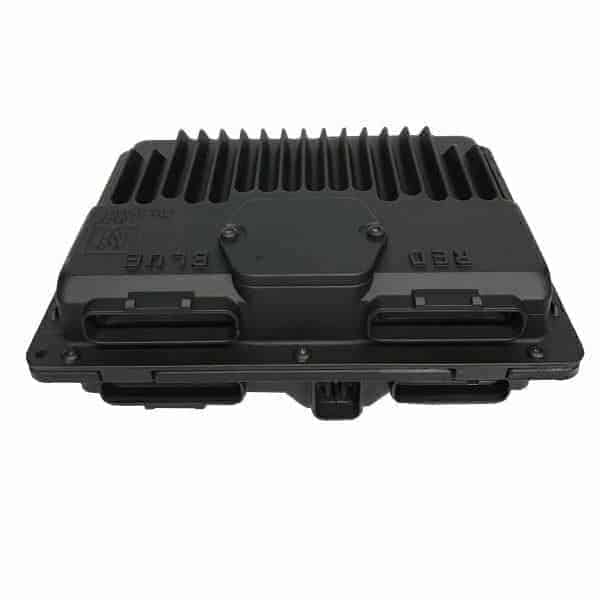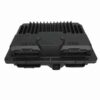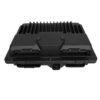Get Your GM Truck Back on the Road with a Reliable, Programmed PCM
If you’re dealing with frustrating engine problems in your 1998 Chevrolet S10, GMC Sonoma, or another compatible GM vehicle, a failing Powertrain Control Module (PCM) is often the culprit. As a technician with over two decades of experience under the hood, I’ve seen countless vehicles sidelined by issues that trace back to a faulty engine computer. This isn’t just a part; it’s the brain of your engine’s operation, and when it falters, you’ll feel it in everything from performance to fuel economy. This reliable, used PCM is the straightforward, cost-effective solution to get your truck running smoothly again.
We take the guesswork and dealer-level expense out of the equation. Before this module ships, we flash it with the latest official GM software updates, specifically programmed to your vehicle’s unique Vehicle Identification Number (VIN). This ensures seamless communication between the computer and your truck’s systems, restoring original performance and often correcting factory bugs you didn’t even know you had. This is the same process a dealership would perform, but without the high labor costs and scheduling hassles.
From the Diagnostic Bay
I remember a 1998 GMC Jimmy that came into the shop with a ghost of a problem. The owner had been to two other places for an intermittent no-start and random stalling. No codes were stored, and everything tested fine. After checking grounds and fuel pressure for the third time, I decided to look at the live data stream from the PCM. I noticed the injector pulse width would randomly drop to zero right before it stalled. On a hunch, we swapped in a known-good, programmed PCM. The problem vanished instantly. The original computer had an internal failure that only showed up under specific thermal conditions—a classic headache that this exact type of replacement solves permanently.
Common Signs of a Failing Engine Computer
A bad PCM can cause a wide range of symptoms that can be mistaken for other issues. If your truck is experiencing any of the following, your engine computer could be the root cause:
- ✔ Persistent Check Engine Light (CEL) with codes like P0601 (Internal Control Module Memory Check Sum Error) or P0606 (PCM Processor Fault).
- ✔ Engine stalling or cutting out for no apparent reason.
- ✔ Rough idling or misfiring.
- ✔ A noticeable drop in fuel economy.
- ✔ Harsh or erratic automatic transmission shifting.
- ✔ The vehicle won’t start, but the battery and starter are good (no-crank, no-start).
- ✔ Failure to pass an emissions test.
A Straightforward Guide to Installation
Installing your new PCM is a job most DIYers can handle with basic tools. The key is taking your time and being careful with the electrical connectors.
- Safety First: Disconnect the negative terminal from your vehicle’s battery to prevent any electrical shorts.
- Locate the PCM: On most of these trucks and vans (like the S10/Blazer/Jimmy), the PCM is located in the engine bay, often on the passenger side firewall or inner fender. It’s a silver metal box with several large multi-pin connectors.
- Disconnect the Connectors: Carefully unlatch and remove the electrical harness connectors from the old PCM. These connectors have locking tabs that need to be released. Do not force them.
- Remove the Old Module: Unbolt the old PCM from its mounting bracket and remove it from the vehicle.
- Install the New PCM: Mount your new, pre-programmed PCM onto the bracket. Firmly reconnect the electrical harnesses, ensuring the locking tabs click securely into place.
- Reconnect the Battery: Reattach the negative battery terminal.
- Perform Security Relearn (If Needed): In many cases, the vehicle will start and run perfectly. However, some GM vehicles of this era require a simple security relearn procedure (often called a Passlock relearn) which involves cycling the key. This procedure can typically be found online or in a service manual for your specific model.
Verified Vehicle Compatibility
This module is a direct replacement for units with service ID number 9355699. It is compatible with a wide range of GM trucks and vans. Please verify your vehicle is on this list and that your original part number is one of the following: 09355699, 16266645, 16250279, 16258815, or 09366810.
- ASTRO 98
- BLAZER S10/JIMMY S15 98
- BRAVADA 98
- CHEVROLET 1500/2500/3500 PICKUP 98-99
- ENVOY 98
- ESCALADE 99
- EXPRESS 1500/2500/3500 VAN 98-99
- GMC 1500/2500/3500 PICKUP 98-99
- ISUZU HOMBRE 98
- S10/S15/SONOMA 98
- SAFARI (GMC) 98
- SAVANA 1500/2500/3500 VAN 98-99
- SUBURBAN 1500/2500 98-99
- TAHOE 98-99
- YUKON 98-99
Why do I need to provide my VIN?
Your Vehicle Identification Number (VIN) allows us to program the PCM with the exact software calibration your truck needs. This includes specifics for the engine, transmission, emissions equipment, and any factory options, ensuring it works perfectly right out of the box.
Is this part difficult to install?
No, for most individuals with basic mechanical skills, this is a straightforward replacement. It typically involves disconnecting the battery, unplugging the old module, unbolting it, and reversing the process for installation. No special programming tools are needed on your end.
What’s the benefit of the ‘newest updates from GM’?
Over time, manufacturers release software updates to fix drivability bugs, improve transmission shifting logic, or enhance engine performance and efficiency. By flashing your module with the latest software, you’re getting a component that often performs better than the original one did when it left the factory.
This is a used part. Is it reliable?
Absolutely. Each module is sourced from a salvaged vehicle and inspected for physical damage. The critical part is the software, which we completely overwrite with fresh, VIN-specific GM data. This process verifies the board’s ability to be programmed, ensuring its electronic functions are solid.
Will I need to do a CASE relearn after installation?
Possibly. A Crankshaft Position System Variation (CASE) relearn synchronizes the PCM with the crankshaft position sensor. While the truck will usually run without it, performing a CASE relearn (which requires a bi-directional scan tool) is recommended for optimal timing and misfire detection. Many local shops can perform this service for a small fee.



